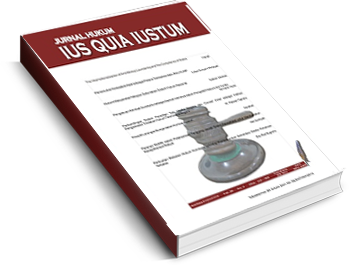Main Article Content
Abstract
This research discusses the problems as follows: First, how Saka fisherman community understands the mastery concept and the ownership of Saka (Hp2S) that are socially constructed from generation to generation as the legal system existing in the traditional fisherman community in the Regency of Tumbang Nusa of Pulang Pisau, Central Kalimantan; second, how Saka fisherman community manages the conflicts; and third, what attempts can be performed in order that the legal norms of Saka fisherman community can be acknowledged in the legal system development process. This research uses the sociology of law study type with emic perspective. The research result concludes that: first, the mastery of Saka is temporary before the decision on acknowledgement as the owner is made. The process of Saka ownership is initiated from the invention of Saka which is not yet owned by anybody. Later, that Saka is confirmed as owned property and gets the acknowledgement from the community. Second, from generation to generation, they manage the conflicts using deliberation to reach consensus. The form of conflict management of Hp2S using “deliberation to reach consensus” is mostly dominated by men as the role models (the elders) in each group owning Saka. Third, the effort which can be done by the government is creating the new regulations of law or reconstructing the normative bases, or at least creating the regulations of the protection of Hp2S values in the national legal system.
Keywords
Article Details
Authors who publish with this journal agree to the following terms:
a. Authors retain copyright and grant the journal right of first publication with the work simultaneously licensed under a Creative Commons Attribution License that allows others to share the work with an acknowledgement of the work's authorship and initial publication in this journal.
b. Authors are able to enter into separate, additional contractual arrangements for the non-exclusive distribution of the journal's published version of the work (e.g., post it to an institutional repository or publish it in a book), with an acknowledgement of its initial publication in this journal.




